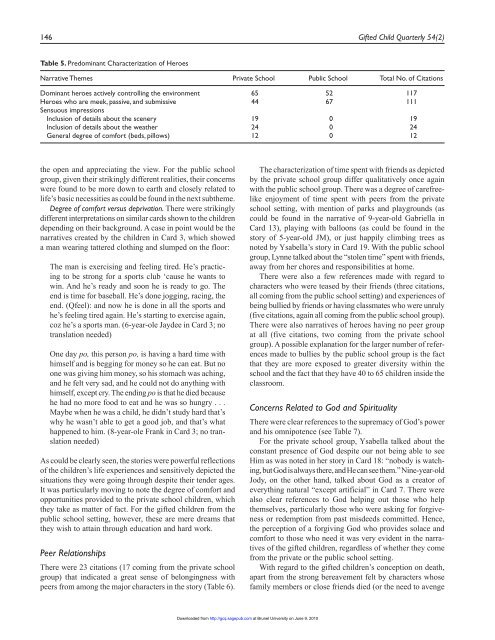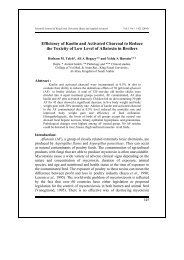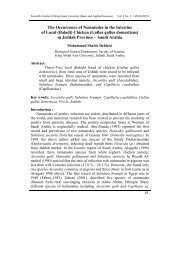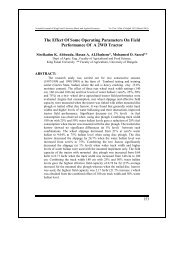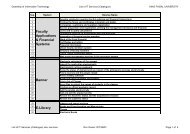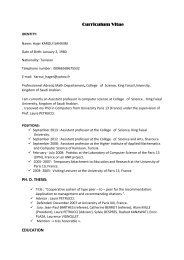Gifted Child Quarterly
Gifted Child Quarterly
Gifted Child Quarterly
You also want an ePaper? Increase the reach of your titles
YUMPU automatically turns print PDFs into web optimized ePapers that Google loves.
146 <strong>Gifted</strong> <strong>Child</strong> <strong>Quarterly</strong> 54(2)Table 5. Predominant Characterization of HeroesNarrative Themes Private School Public School Total No. of CitationsDominant heroes actively controlling the environment 65 52 117Heroes who are meek, passive, and submissive 44 67 111Sensuous impressionsInclusion of details about the scenery 19 0 19Inclusion of details about the weather 24 0 24General degree of comfort (beds, pillows) 12 0 12the open and appreciating the view. For the public schoolgroup, given their strikingly different realities, their concernswere found to be more down to earth and closely related tolife’s basic necessities as could be found in the next subtheme.Degree of comfort versus deprivation. There were strikinglydifferent interpretations on similar cards shown to the childrendepending on their background. A case in point would be thenarratives created by the children in Card 3, which showeda man wearing tattered clothing and slumped on the floor:The man is exercising and feeling tired. He’s practicingto be strong for a sports club ‘cause he wants towin. And he’s ready and soon he is ready to go. Theend is time for baseball. He’s done jogging, racing, theend. (Qfeel): and now he is done in all the sports andhe’s feeling tired again. He’s starting to exercise again,coz he’s a sports man. (6-year-ole Jaydee in Card 3; notranslation needed)One day po, this person po, is having a hard time withhimself and is begging for money so he can eat. But noone was giving him money, so his stomach was aching,and he felt very sad, and he could not do anything withhimself, except cry. The ending po is that he died becausehe had no more food to eat and he was so hungry . . .Maybe when he was a child, he didn’t study hard that’swhy he wasn’t able to get a good job, and that’s whathappened to him. (8-year-ole Frank in Card 3; no translationneeded)As could be clearly seen, the stories were powerful reflectionsof the children’s life experiences and sensitively depicted thesituations they were going through despite their tender ages.It was particularly moving to note the degree of comfort andopportunities provided to the private school children, whichthey take as matter of fact. For the gifted children from thepublic school setting, however, these are mere dreams thatthey wish to attain through education and hard work.Peer RelationshipsThere were 23 citations (17 coming from the private schoolgroup) that indicated a great sense of belongingness withpeers from among the major characters in the story (Table 6).The characterization of time spent with friends as depictedby the private school group differ qualitatively once againwith the public school group. There was a degree of carefreelikeenjoyment of time spent with peers from the privateschool setting, with mention of parks and playgrounds (ascould be found in the narrative of 9-year-old Gabriella inCard 13), playing with balloons (as could be found in thestory of 5-year-old JM), or just happily climbing trees asnoted by Ysabella’s story in Card 19. With the public schoolgroup, Lynne talked about the “stolen time” spent with friends,away from her chores and responsibilities at home.There were also a few references made with regard tocharacters who were teased by their friends (three citations,all coming from the public school setting) and experiences ofbeing bullied by friends or having classmates who were unruly(five citations, again all coming from the public school group).There were also narratives of heroes having no peer groupat all (five citations, two coming from the private schoolgroup). A possible explanation for the larger number of referencesmade to bullies by the public school group is the factthat they are more exposed to greater diversity within theschool and the fact that they have 40 to 65 children inside theclassroom.Concerns Related to God and spiritualityThere were clear references to the supremacy of God’s powerand his omnipotence (see Table 7).For the private school group, Ysabella talked about theconstant presence of God despite our not being able to seeHim as was noted in her story in Card 18: “nobody is watching,but God is always there, and He can see them.” Nine-year-oldJody, on the other hand, talked about God as a creator ofeverything natural “except artificial” in Card 7. There werealso clear references to God helping out those who helpthemselves, particularly those who were asking for forgivenessor redemption from past misdeeds committed. Hence,the perception of a forgiving God who provides solace andcomfort to those who need it was very evident in the narrativesof the gifted children, regardless of whether they comefrom the private or the public school setting.With regard to the gifted children’s conception on death,apart from the strong bereavement felt by characters whosefamily members or close friends died (or the need to avengeDownloaded from http://gcq.sagepub.com at Brunel University on June 9, 2010


